More megapixels and yet dramatically lower noise for the Lumix DMC-FZ50 say Panasonic. So how did these claims bear out?
Discuss this article on the DPNow News discussion forum
How do you appreciate your photos in this digital age?
I spent relatively little time with the DMC-FZ50 during last week's
Panasonic Lumix Barcelona press event for the European press, so below is a smaller than ideal gallery of original JPEG images I took using the camera. However, I was able to make some quick comparisons with last year's DMC-LX1 to get an idea if Panasonic's claims that the latest Venus Engine III in the FZ50 dramatically lowers noise.
One the second page of this article, in light of Panasonic's exuberant claims concerning reduction in image noise, is some close examination of the ISO range noise performance of the FZ50.
But first, here are some sample images taken on a hot and humid day in Guell Park, overlooking Barcelona. The FZ50 sample camera used was late pre-production, but we were given the thumbs-up to publish images taken. All shots were taken with the camera set to record least-compressed JPEG files and Mega OIS image stabilisation was set to mode 2.
Please note, by clicking on the the thumbnails below, the full orginal 4-5 megabyte 10.2 megapixel JPEG image will show in your browser. You may prefer to download the image to your computer for convenient browsing offline. Windows users can do this by right-clicking and using the 'Save Picture as...' option.
In fact I urge you to evaluate these pictures offline by printing them, as I did, as I don't feel that on-screen examination, especially at the high resolution of these files, serves the overall quality that these files bear.
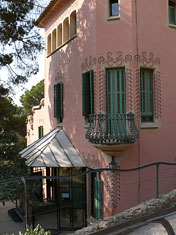
|
|
 |
Here is a shot of the Gaudi museum in Barcelona's Guell Park taken at the widest (35mm equivalent) zoom setting. It's part of a series of ISO range comparison shots you can find on page 2. Shutter: 1/250th, f/5, ISO 100
|
|
A pigeon caught in semi-shade at the longest (420mm equiv.) zoom setting. Notice the bird's left leg is motion blurred but the rest of the scene is sharp. Hand held. 1/200th, f/5.6, ISO 200
|
 |
|
 |
Again, using the longest tele setting, this close up of a palm tree printed up better than it looked on the monitor. I had switched up to ISO 200 but probably hadn't needed to. Shutter: 1/250th, f/5, ISO 200
|
|
Here is the same tree, but at the opposite end (35mm equiv.) end of the zoom. Shutter: 1/500th, f/7.1, ISO 200
|
 |
|
 |
At an equivalent focal length of 316mm this souvenir salesman, toiling in the oppressive sun and humidity, was captured well and the print looked especially good, with highlights preserved, though at the expense of some shadow detail. Really punchy colours. Shutter: 1/640th, f/8, ISO 200
|
|
Finally, another full tele shot. This one looked better on-screen than the print, which accentuated the softness of the flower head, probably because of some motion blur. Shutter: 1/250th, f/4, ISO 100
|
I need more time with the camera to come to firm conclusions, but colours are punchy, stabilised telephoto performance is encouraging amd noise does seem noticeably reduced. I'm yet to be convinced that the extra couple of megapixels contributes anything to image detail, though.
Now on
page two we examine the FZ50's noise performance.
Panasonic claim dramatic noise reductions and our Lumix DMC-FZ50 ISO range samples show that significant improvements have indeed been achieved.
Discuss this article on the DPNow News discussion forum
Undoubtedly, Panasonic has built up a fervent fan base with its Lumix digital camera brand. The company has managed to carve a niche for itself through some genuinely innovative design, plus its invaluable alliance with Leica. It has also done this in a relatively short period of time. A lot of people love Lumix cameras, but one thing even the most ardent Lumix fans want to see improved is image noise performance. Panasonic say they have now answered the call. Are they right? We hope to lay the foundations of answering that question here.
On this page we have two sections for you to peruse. Firstly, we have reproduced scanned areas of prints we have made from both a DMC-LX1, representing the older generation of eight megapixel and Venus Engine sensor/imaging pipeline technology and the new 10.2 megapixel sensor with Venus Engine III.
Below these we have crops from the full original images, which can also be downloaded, if required.
Examining printed image quality
The following are scanned at 300ppi from an A4 print, cropped, resized to 600 pixels wide for on-screen display and moderately sharpened. The aim was to reproduce the viewing experience of an A4 print viewed from about 18 inches. I did this because with ten megapixel image files viewed at 1:1 on-screen, you inevitably see a level of basic image file detail that may be unrepresentative of what's printed and viewed at reasonable distances. It can be argued that this forgives the presence of noise in an image, but it doesn't hide improvements in noise performance when present.
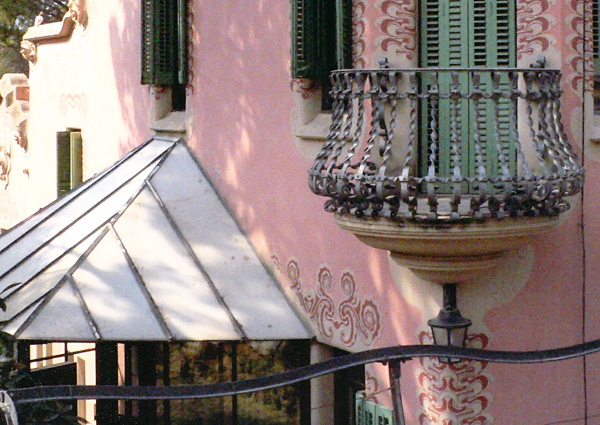
Panasonic Lumix DMC-LX1 @ISO 400
With last year's LX1 at ISO 400 there is quite noticeable noise, especially chroma (colour) noise. The original camera image file (warning, 4-5 megabytes) is available for
download.

Panasonic Lumix DMC-FZ50 @ISO 400
Compared to the LX1 at ISO 400, chroma noise with the FZ50 is practically absent and luminance noise is comparatively well suppressed too. But what is the cost? Edge sharpness in the window blind slats is, if anything, better than the LX1, but the FZ50 image is also less saturated, with colour tones looking on the flat side.
The original camera image file is available for
download.
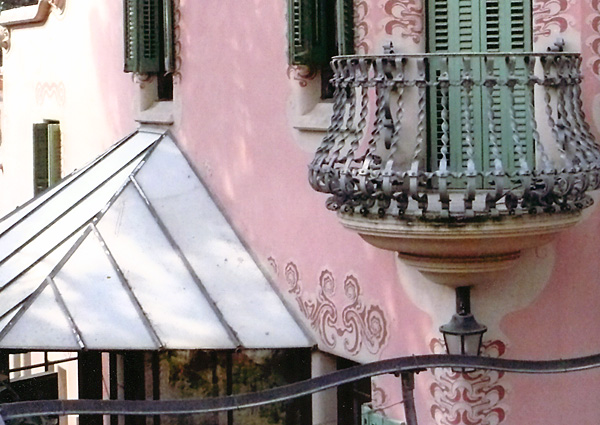
Panasonic Lumix DMC-FZ50 @ISO 800
Compare the ISO 800 FZ50 print with the ISO 400 LX1 print and there is less noise than the LX1, but this seems to be achieved at the cost of some smearing. Nevertheless, I'd expect a test chart to show good luminance level resolution from the FZ50 compared to the LX1, but where there are fine edges between colours, the LX1 looks a bit better. But print the two images at 6x4 and I think there would be little to choose, apart from the FZ50 image being less saturated. The original camera image file (warning, 4-5 megabytes) is available for
download.
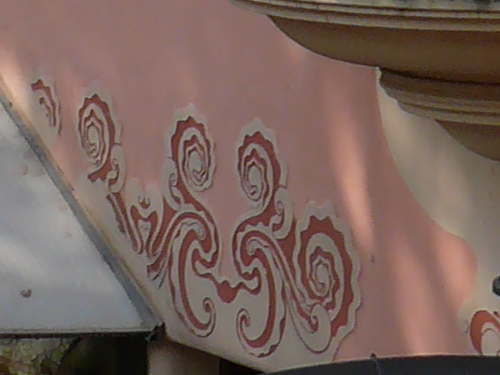
Panasonic Lumix DMC-FZ50 @ISO 100
Click here to view or download the full and original (4MB approx.)image.

Panasonic Lumix DMC-FZ50 @ISO 200
Click here to view or download the full and original (4MB approx.)image.
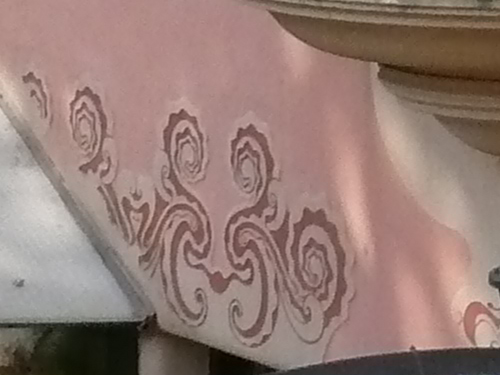
Panasonic Lumix DMC-FZ50 @ISO 400
Click here to view or download the full and original (4MB approx.)image.

Panasonic Lumix DMC-FZ50 @ISO 800
Click here to view or download the full and original (4MB approx.)image.

Panasonic Lumix DMC-FZ50 @ISO 1600
Click here to view or download the full and original (4MB approx.)image.
What really strikes me is that Panasonic has delivered on the reduction in chroma noise. ISO 800 and even 1600 are now usable, the latter if you print relatively small. Luminance noise is definitely reduced but there is some evidence of detail cost. Shaded areas do seem less saturated than the LX1 we compared with, but in good light the FZ50 still delivered very good colour.
And what of the DMC-LX2?
We had engineering samples of the LX2 to use, but as these are about a month behind in the development cycle compared to the FZ50s we had, we were politely asked not to publish LX2 sample images at this stage. What I can say is that the LX2 I used showed the same sort of significant chroma noise reduction that I saw in the FZ50 at higher ISO levels, but that luminance noise was still relatively high. However, there is no reason to expect this to remain the case and I'm confident that luminance noise will be reduced significantly in production LX2s - put it this way, I'd be very surprised if it wasn't!
So there you have it, Panasonic are fully justified in their enthusiasm for the new ten megapixel plus Venus Engine III combination. In many ways, an FZ50 ISO 800 image is as good now as the former generation was at ISO 400 and the like-for-like comparison at ISO 400 is a no-competition win for the FZ50. Panasonic modestly suggests some work is still needed to match the remarkable low noise performance of Fujifilm's FinePix F10, F11 and F30, but those models only sport six megapixels, so Panasonic has made a remarkable achievement with its ten megapixel sensors.
On the other hand, and I think this is echoed by a lot of people, you have to ask whether or not Panasonic needed to go to ten megapixels at all. With the small sensor sizes used by Panasonic, it gets increasingly difficult to translate the native sensor resolution into useful image resolution. But, alas, the marketing lure of megapixels is an immensely strong one.
Tell us what you think!




